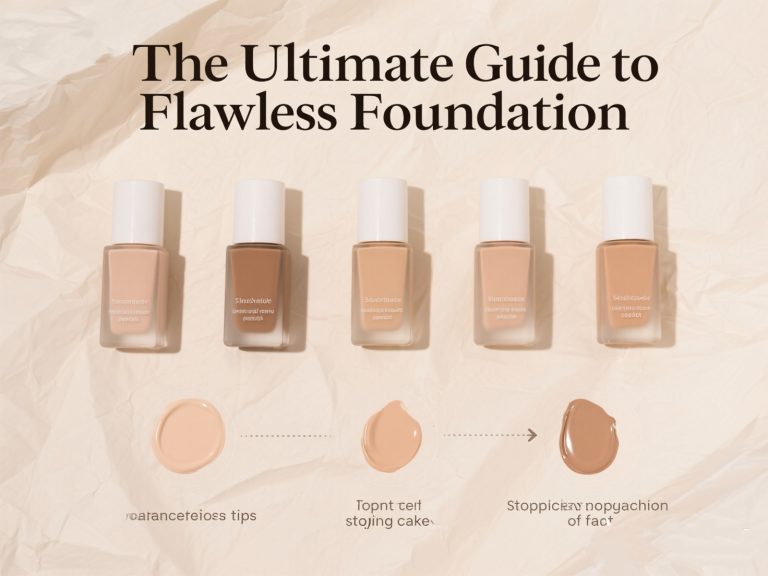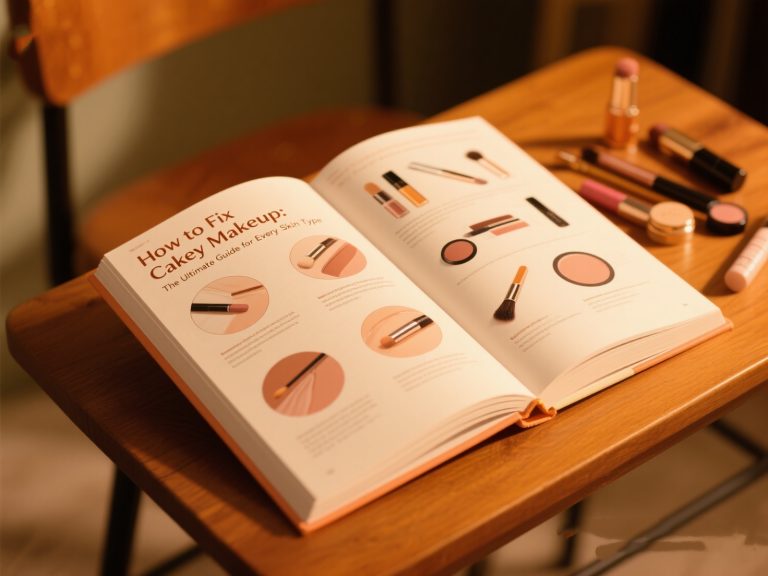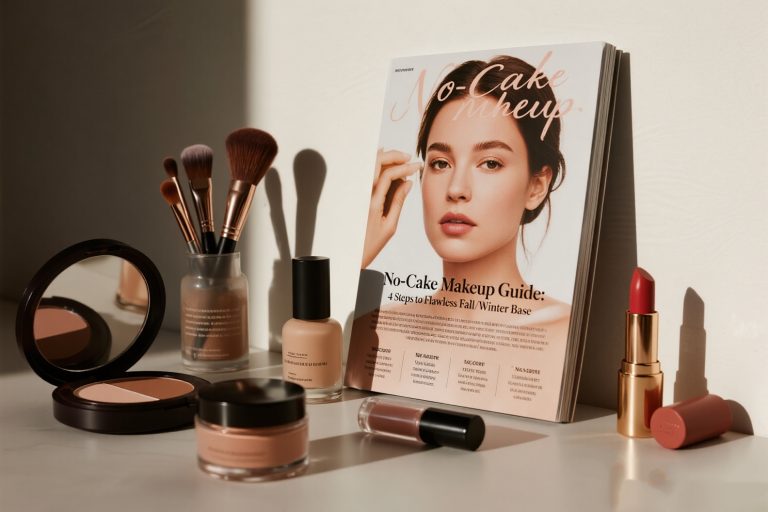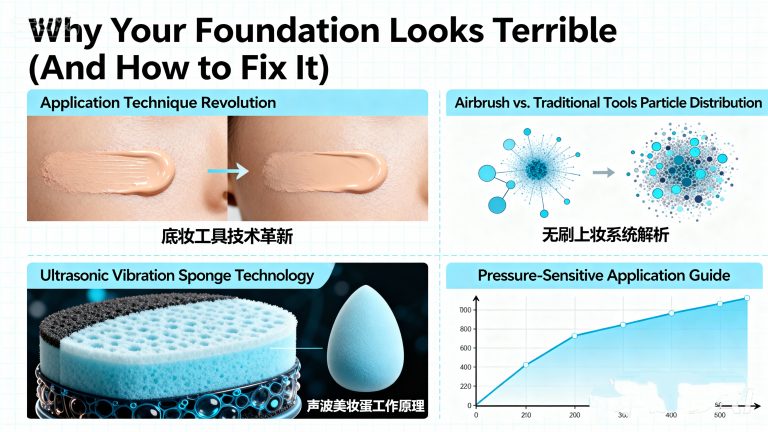Why Your Foundation Looks Perfect Until It Doesn’t: The Real Talk on Cakey and Patchy Makeup
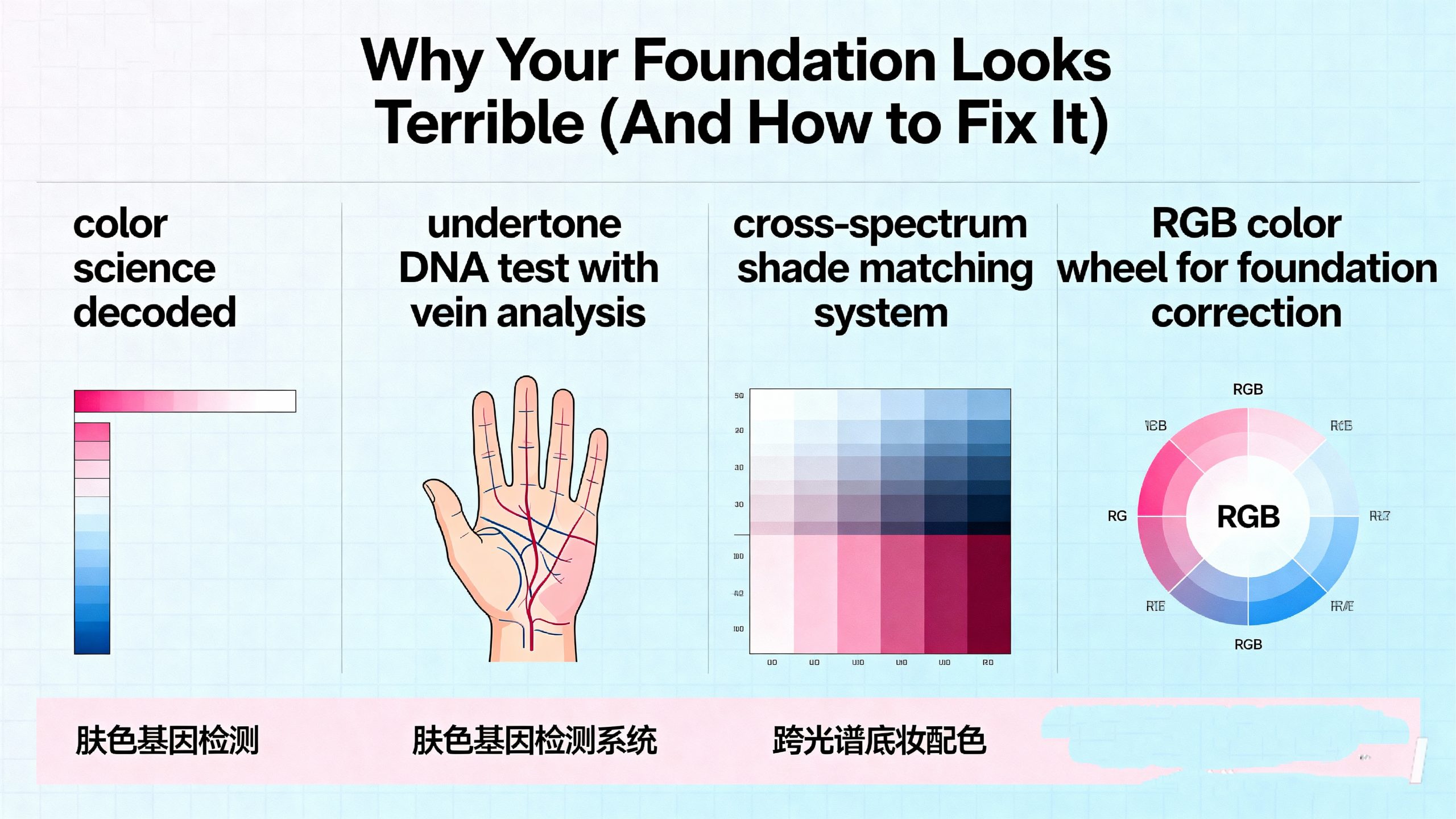
Let’s Be Honest About Foundation Fails
You spend an hour perfecting your base.
You walk out the door looking flawless.
Two hours later? You look like you aged a decade.
Sound familiar?
Here’s the truth nobody wants to admit: that $60 foundation everyone swears by might be trash on YOUR skin.
And no, it’s not the foundation’s fault.
It’s not your fault either.
But we need to talk about what’s actually going wrong.
The Two Foundation Disasters You Need to Know
Patchiness: When Your Foundation Won’t Stick
Patchiness happens when your foundation literally sits on top of your skin instead of melting into it.
For dry skin: It looks like sandpaper. Or cracked desert earth if you’re really unlucky.
Your skin is basically rejecting the product because there’s nothing for it to grip onto.
For oily skin: Your natural oils push the foundation up and away from your face.
Think meatballs floating in hot pot. Not cute.
Caking: The Dreaded Fine Lines Highlight Reel
Caking is when foundation settles into every line, wrinkle, and texture on your face.
Smile lines? Now they’re foundation trenches.
Eye creases? Congratulations, you’ve just excavated ancient ruins on your face.
This happens to everyone, regardless of skin type.
It’s usually triggered by facial expressions and movement.
Why This Keeps Happening to You
Stop blaming the foundation.
Stop buying more expensive products thinking that’ll fix it.
The problem is your skin.
Not in a “your skin is bad” way.
In a “your skin isn’t prepped” way.
The Uncomfortable Truth for Dry Skin
Your sebaceous glands are lazy.
They don’t produce enough oil.
So your skin is basically the Sahara Desert, and water evaporates instantly.
Without that protective oil barrier, your skin gets dehydrated.
Dehydrated skin plus powder? Recipe for disaster.
Real solution: Layer your moisturizer properly.
Use a hydrating serum or essence before your moisturizer.
This isn’t optional if you want your foundation to behave.
The Hard Facts for Oily Skin
Your sebaceous glands are overachievers.
They will produce oil. Period.
You cannot stop this with harsh cleansers or skipping moisturizer.
In fact, those tactics make it worse.
Real solution: Stop fighting your skin’s natural oil production.
Start working with it instead.
What Actually Works: No BS Guide
Step 1: Learn to Wash Your Face (Seriously)
Twice a day. Morning and night.
Use lukewarm water. Not hot, not cold.
Oily skin warning: Do NOT use aggressive cleansers or scrub your face raw.
You’ll damage your skin barrier.
Then your skin panics and produces even MORE oil.
Plus you might get breakouts as a bonus.
Nobody wins.
Step 2: Moisturize Immediately After Washing
This applies to EVERYONE.
Yes, even you with the oily skin.
When your skin loses water, your sebaceous glands go into overdrive trying to “protect” you.
Result? Oily AND dehydrated skin simultaneously.
Now you’re dealing with both patchiness AND caking.
Important note: Sheet masks alone don’t cut it.
They provide temporary hydration but don’t lock it in.
You need to follow up with an actual moisturizer or face cream that creates a barrier.
Step 3: Stop Layering Everything You Own
Using ten products doesn’t mean better skin.
Especially for oily skin, too many products just sit on your face.
They interfere with your makeup.
They can even cause skin issues.
Smart approach: Simplify your routine.
Prioritize hydration above everything else.
Yes, even above your anti-aging serum.
Why? Because most active ingredients (retinol, vitamin C, AHAs) can be irritating.
They often cause peeling and increased cell turnover.
Without proper moisture, you get redness, sensitivity, and flaking.
Flaky skin + foundation = the cake fest you’re trying to avoid.
Choose Your Moisturizer Based on Your Skin Type
Dry Skin: You Need Occlusives
Ingredients like mineral oil, petrolatum (Vaseline), and dimethicone create a protective film.
They physically block water from escaping your skin.
They’re affordable and effective.
But they can clog pores on naturally oily skin.
Best practice: Use these in your night routine, or mix them with lighter products during the day.
Oily Skin: You Need Humectants
Look for hyaluronic acid and glycerin.
Hyaluronic acid is already in your body.
It holds up to 1000x its weight in water.
It’s a lightweight hydrator that won’t suffocate your skin.
Glycerin pulls moisture from the air.
It hydrates without feeling heavy or greasy.
The Universal Truth
Everyone benefits from layering hydrating products under occlusives.
Dry skin? Use a hyaluronic acid serum, then lock it in with a richer cream.
Oily skin? Use lightweight hydrators and skip heavy creams.
The key is finding the right texture for YOUR skin.
The Real Solution: Lightweight Hydration That Actually Works
Forget spending hundreds on foundation.
Find ONE good moisturizer that’s both lightweight and effective.
This is your foundation’s foundation (pun intended).
What to look for:
- Fast absorption
- Non-greasy finish
- Actual hydrating ingredients
- Works under makeup
- Won’t cause breakouts
Hydration is literally the base of everything else.
You can’t build effective anti-aging or brightening routines on dehydrated skin.
Bottom Line
Your foundation isn’t the problem.
Your $200 serum won’t save you if your basics are wrong.
Master two things: gentle cleansing and proper hydration.
Everything else is noise.
Quick recap for the busy people:
Morning routine: Gentle cleanser → Lightweight hydrating product → Moisturizer (if needed) → Sunscreen → Foundation
Evening routine: Cleanse → Hydrating layers → Moisturizer to seal
Keep it simple.
Keep it consistent.
Your skin (and your foundation) will thank you.
Ingredient Cheat Sheet
For all skin types:
- Hyaluronic acid (multiple molecular weights work best)
- Glycerin
- Sodium PCA
- Panthenol
Additional for dry skin:
- Ceramides
- Squalane
- Shea butter
Avoid if you’re acne-prone:
- Heavy mineral oils
- Thick petrolatum-based products
- Comedogenic oils (coconut, palm)
Red flags for sensitive skin:
- Fragrance (synthetic or natural)
- High concentrations of essential oils
- Alcohol denat (drying alcohols)
Remember: Expensive doesn’t mean better.
Simple, targeted ingredients beat fancy marketing every time.
Now go fix that base and stop blaming your foundation.
